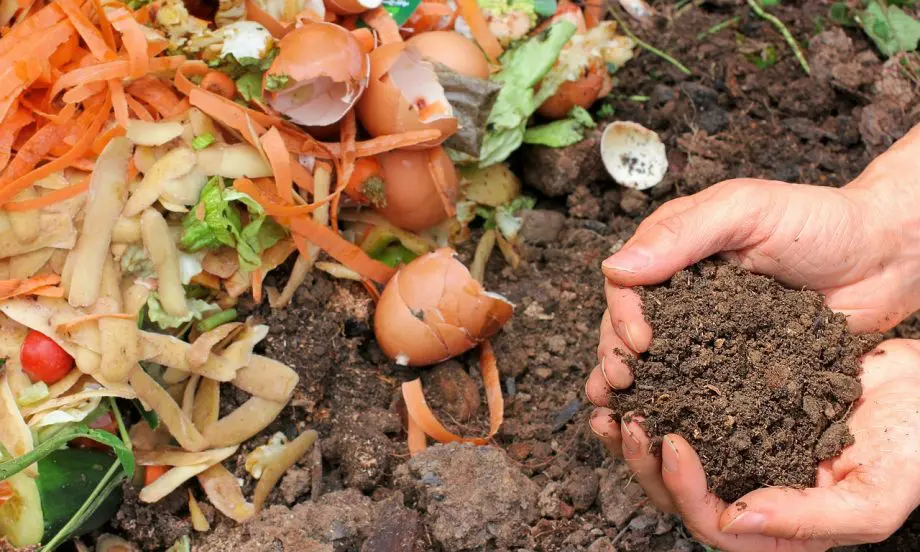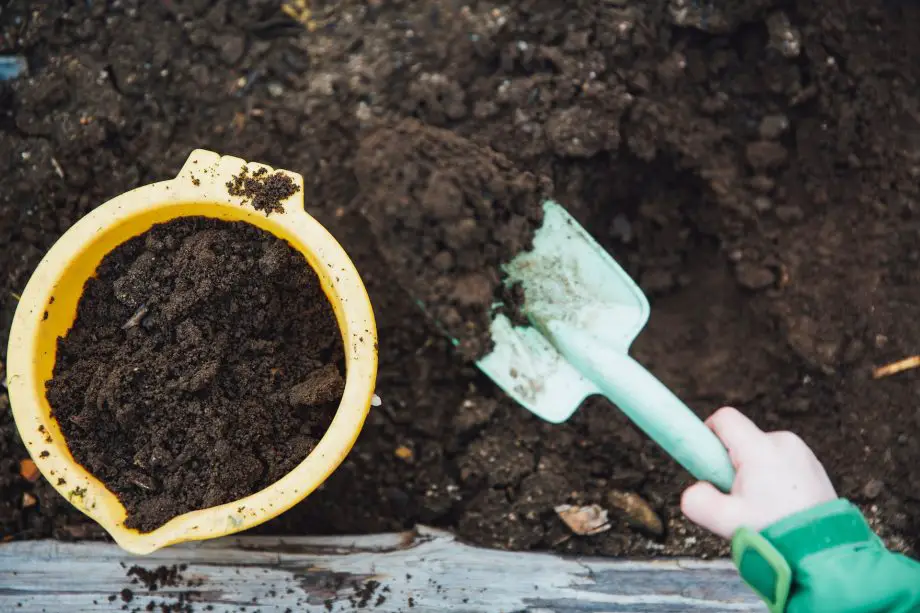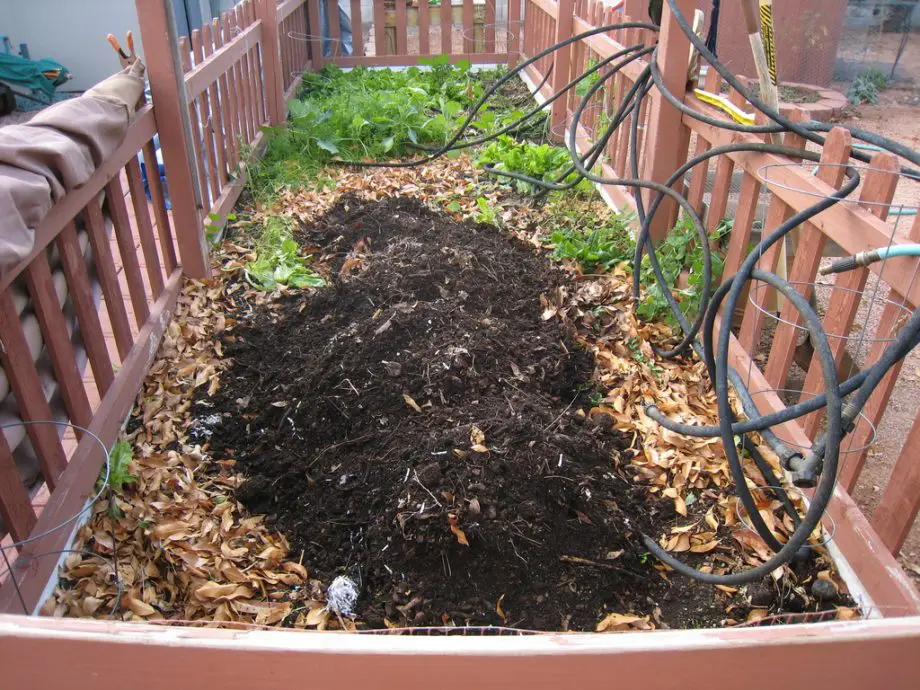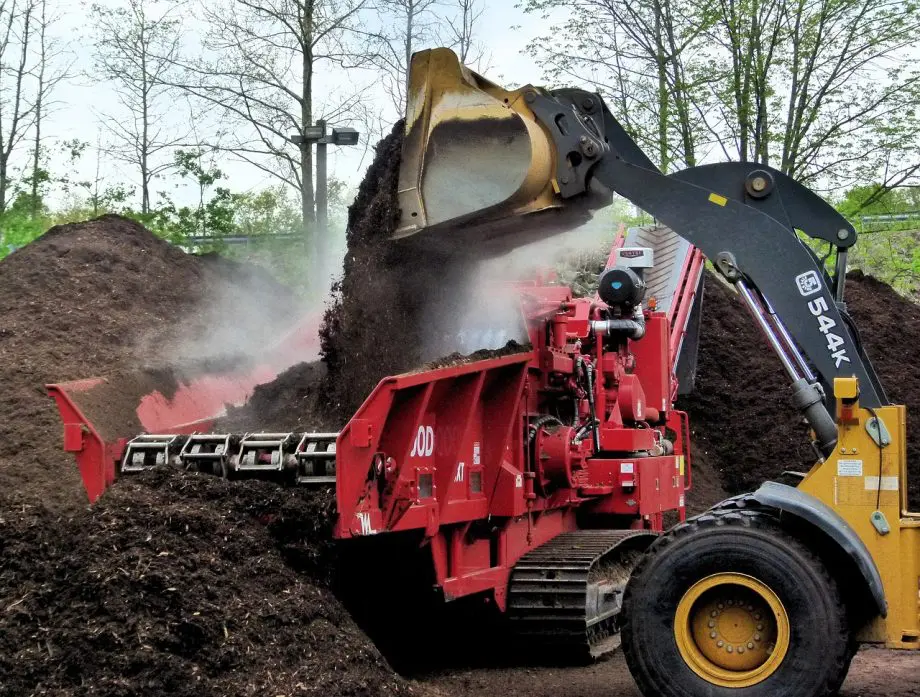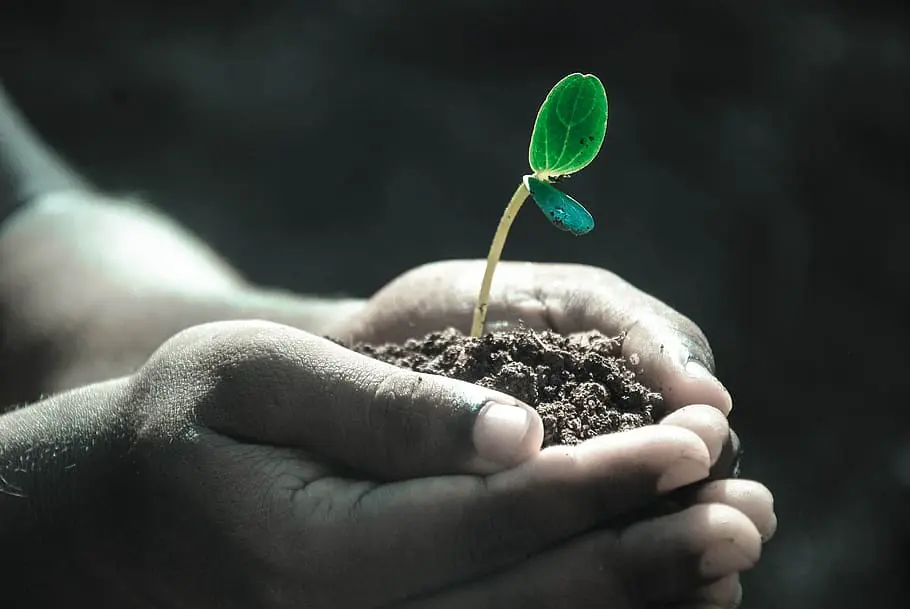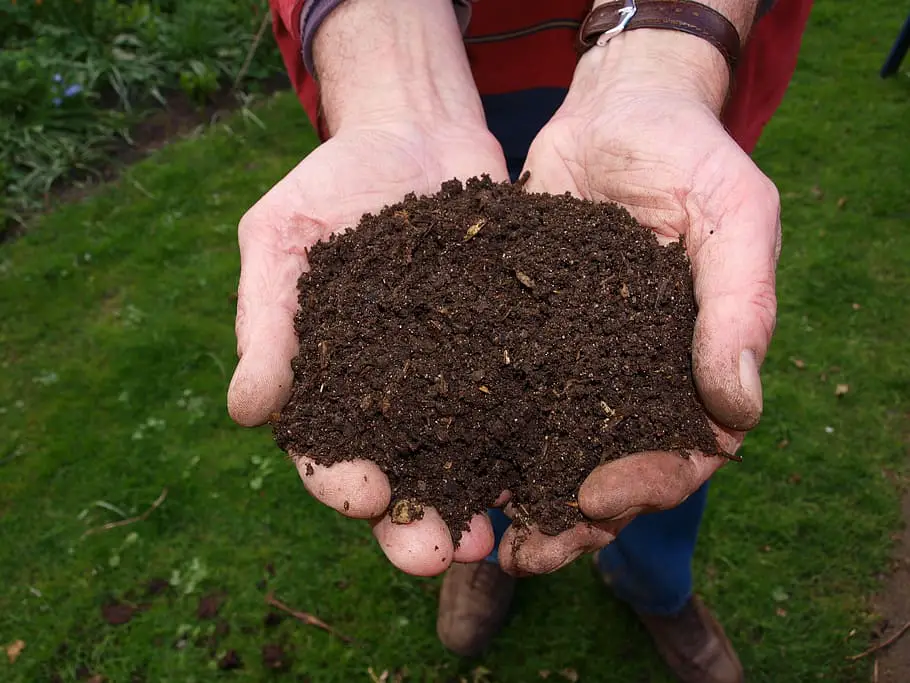
Discover the best compost ingredients for a thriving garden! Dive into our guide and learn how to turn kitchen scraps into nutrient-rich soil.
Ever wondered how to turn your kitchen scraps into a gardener’s goldmine?
Well, it all boils down to knowing the best compost ingredients.
Composting is like cooking; it’s all about mixing the right ingredients in the right proportions.
And just like a well-cooked meal can delight your taste buds, a well-made compost can work wonders for your garden.
So, let’s dive in and uncover the secret recipe for creating the perfect compost mix.
Best Compost Ingredients
Welcome to your one-stop guide on composting! In this post, we’ll be exploring the fascinating world of composting, from understanding the science behind it to identifying the best compost ingredients for a nutrient-rich mix.
We’ll delve into the roles of carbon, nitrogen, and microorganisms in the composting process, and discuss the green and brown materials that make up an ideal compost pile.
Plus, we’ll tackle some frequently asked questions and provide tips on how to speed up the composting process.
By the end of this read, you’ll be well-equipped to start your composting journey and contribute to a healthier planet. Let’s get started!
Definition of Composting
Composting, in its simplest form, is a natural process that transforms organic matter like kitchen waste, wood chips, and other yard waste into a nutrient-rich soil conditioner.
It’s a bit like magic, really. You start with things you’d normally throw away like banana peels, coffee grounds, or fallen leaves, and with a bit of time and care, they transform into a rich, dark material that gardeners affectionately call ‘black gold’.
This ‘black gold’, or compost, is teeming with nutrients and beneficial microorganisms that help plants thrive.
Importance of Composting
Now, you might be wondering, Why should I compost?
Well, composting is more than just a way to reduce food waste and create nutrient-rich soil.
It’s a small, yet powerful step towards a more sustainable lifestyle.
When we compost, we reduce the amount of waste that ends up in landfills where it can produce harmful greenhouse gases.
Plus, using compost in our gardens reduces the need for chemical fertilizers, promoting healthier soil and plants.
So, in essence, composting is a win for us, a win for our gardens, and a win for our planet.
Brief Overview of the Article
In this article, we’re going to take a deep dive into the world of composting.
We’ll explore the science behind it, discuss the best ingredients for a successful compost pile, and even debunk some common composting myths.
We’ll also provide some practical tips on how to manage your compost pile and answer some frequently asked questions.
Whether you’re a composting newbie or a seasoned pro, there’s something in here for everyone.
So, let’s get started and dig into the wonderful world of composting!
Understanding Composting

Ready to become a composting whiz? Great! Before we start piling up kitchen scraps and yard waste, let’s take a moment to understand what composting really is.
It’s not just about throwing organic waste into a compost heap and waiting for it to decompose.
There’s a fascinating science behind it, involving a delicate balance of elements and a bustling community of microorganisms.
In this section, we’ll delve into the nitty-gritty of composting, from the crucial roles of carbon and nitrogen to the tireless work of our microscopic helpers.
So, buckle up, and let’s embark on this exciting journey into the heart of composting!
The Science Behind Composting
Composting is a natural process, but there’s a lot of science involved. Think of it as a bustling city where every resident has a job to do.
The organic waste you add to your compost pile is like the city’s resources. Microorganisms, insects, and worms are the city’s workers, breaking down these resources into a form that plants can use.
This process of decomposition is essentially nature’s recycling program.
It’s how nutrients in dead plants and other organic materials get returned to the soil to nourish new life. Pretty cool, right?
The Importance of Carbon and Nitrogen in Composting
In the world of composting, carbon and nitrogen are like bread and butter. Both elements are essential for the composting process, but it’s all about balance.
Carbon-rich materials, often referred to as ‘browns’, include things like leaves, straw, and paper.
They provide the energy that microorganisms need to grow and reproduce.
Nitrogen-rich materials, or ‘greens’, include items like vegetable scraps, coffee grounds, and fresh grass clippings.
They provide the protein that microorganisms need to build their bodies.
A good rule of thumb is to aim for a mix that’s about 3 parts ‘browns’ to 1 part ‘greens’. This balance helps ensure a healthy, efficient composting process.
The Role of Microorganisms in Composting
Microorganisms are the unsung heroes of composting. These tiny organisms, including bacteria and fungi, are responsible for breaking down the organic materials in your compost pile.
They munch away on the carbon for energy and use the nitrogen to grow and reproduce.
As they break down the materials, they generate heat, which in turn speeds up the decomposition process.
It’s a bustling, heated dance of nature that results in nutrient-rich compost.
So, next time you look at your compost pile, remember the millions of microorganisms working tirelessly to turn your waste into garden gold.
Best Ingredients for Composting
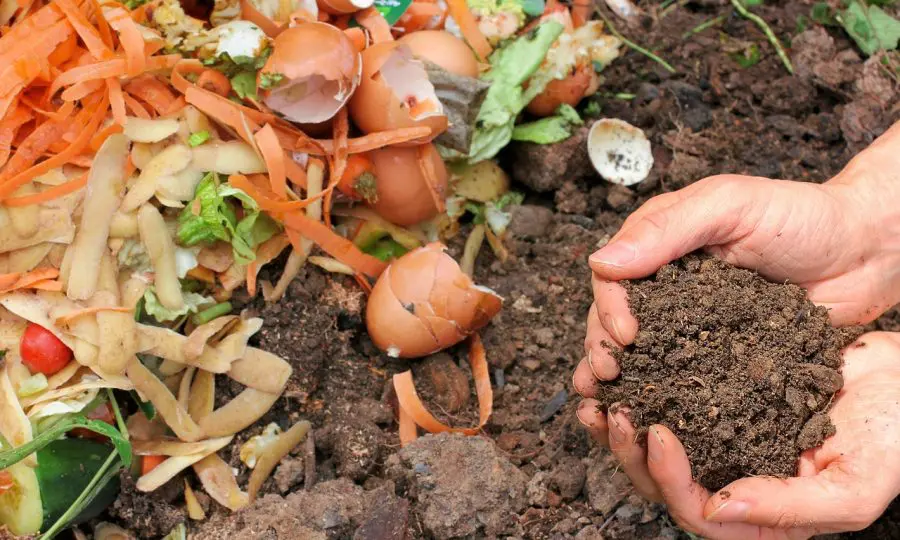
Now that we’ve got the science down, let’s move on to the fun part of gathering our compost ingredients!
Just like baking a cake, the success of your compost pile depends on adding the right ingredients in the right amounts to get the best results.
But don’t worry, you won’t need to run to the store for these ingredients. They’re probably already in your kitchen or your backyard!
In this section, we’ll discuss the ‘greens’ and ‘browns’ that make up a healthy compost pile and some special additions that can give your compost an extra boost.
We’ll also talk about what not to add to your compost pile. So, let’s roll up our sleeves and start gathering our compost ingredients!
Green materials for composting
Let’s kick things off with the ‘greens’ of composting. No, we’re not just talking about vegetable peels and grass clippings, although they are a part of it.
‘Greens’ in composting terms refer to nitrogen-rich materials that are essential for the composting process.
They’re like the protein in our composting meal, providing essential nutrients for the microorganisms that do all the hard work.
In this section, we’ll explore some common green materials you can add to your compost pile, from food scraps to garden waste.
So, let’s dive in and see what ‘greens’ you can start collecting for your compost pile!
Grass Clippings
Grass clippings are a fantastic addition to your compost pile. They’re rich in nitrogen and break down relatively quickly.
After mowing your lawn, instead of bagging up the clippings and tossing them out, add them to your compost pile.
Just remember, moderation is key. Too many grass clippings can create a dense, wet layer that’s hard for air to penetrate.
So, mix them well with your ‘browns’ to keep your compost pile healthy and efficient.
Vegetable and Fruit Scraps
Next time you’re cooking, don’t throw away those vegetable peels or fruit cores.
These kitchen scraps are full of nutrients and make excellent green materials for your compost pile.
Things like apple cores, carrot peels, and cucumber ends are all fair game.
Just avoid adding any diseased or pest-infested plants, as they could spread problems to your garden when you use the compost.
Coffee Grounds
Are you a coffee lover? Great news! Your morning routine can contribute to your composting efforts.
Coffee grounds are rich in nitrogen, making them a valuable green material.
Plus, they have a nice, neutral pH that can help balance the compost pile.
And don’t forget the filters. As long as they’re paper, they can be composted too. Just tear them up into smaller pieces to help them break down faster.
So, go ahead and enjoy that cup of joe, knowing the grounds are going to good use in your compost pile.
Brown materials for composting
Now, let’s talk about the ‘browns’ of composting. These are carbon-rich materials, and they play a crucial role in the composting process.
Think of them as the carbs in our composting meal, providing the energy that microorganisms need to do their job.
Browns also help to add bulk and structure to your compost pile, promoting good air circulation.
In this section, we’ll delve into some common brown materials you can add to your compost pile, from fallen leaves to cardboard.
Ready to explore the world of ‘browns’? Let’s get started!
Leaves
Fallen leaves are one of the most readily available brown materials for composting, especially during the autumn months.
They’re rich in carbon and help to balance out the nitrogen from your green materials.
Plus, they add structure to your compost pile, promoting good air circulation.
Just make sure to shred or chop them up before adding them to your pile, as this will help them break down faster.
So, next time you’re raking up leaves in your yard, remember to save some for your compost pile!
Cardboard
Cardboard is another excellent brown material for your compost pile. It’s high in carbon and breaks down relatively easily.
Just make sure to use only plain, uncoated cardboard. Things like cereal boxes, toilet paper rolls, and shipping boxes are all good options.
Just remember to remove any tape or labels and tear the cardboard into smaller pieces before adding it to your compost pile.
This will help it break down faster and make it easier for the microorganisms to do their job.
Twigs and Branches
Twigs and branches are a great addition to your compost pile. They’re high in carbon and add bulk and structure to your compost pile.
Plus, they help to create air pockets in the pile, which is essential for good composting.
Just be sure to chop or break them up into smaller pieces before adding them to your pile.
Larger branches can take a long time to break down, so it’s best to keep them to a minimum or leave them out altogether.
Remember, the goal is to create a balanced compost pile that breaks down efficiently, so size and balance are key.
Other Woody Materials
Woody materials like wood shavings, wood chips, and sawdust are excellent additions to your compost pile.
They are considered ‘brown’ materials, meaning they are high in carbon, which is essential for the composting process.
These woody materials help to balance out the ‘green’ nitrogen-rich materials like vegetable scraps and grass clippings.
They also add structure to your compost pile, promoting aeration and preventing it from becoming too compacted or waterlogged.
However, it’s important to remember that woody materials break down more slowly than other compost ingredients.
Smaller pieces will decompose faster, so if possible, use finely shredded wood or sawdust.
Also, be sure that any wood you use has not been treated with chemicals, as these can be harmful to the beneficial organisms in your compost pile and can contaminate your compost.
So, next time you’re cleaning up after a woodworking project, consider adding those shavings or sawdust to your compost pile!
Special considerations for composting
While we’ve covered the basics of ‘greens’ and ‘browns’, composting isn’t just a two-color show.
There are some special additions that can give your compost pile an extra boost and some materials that need a bit more consideration before being added.
In this section, we’ll discuss some of these special considerations for composting, from manure to old wine.
Yes, you read that right, even your leftover wine can play a part in creating nutrient-rich compost!
So, let’s dive a little deeper into the world of composting.
Manure (preferably organic)
Manure can be a fantastic addition to your compost pile, providing a rich source of nitrogen and other nutrients.
However, it’s important to use manure from herbivores only, like cows, horses, or chickens.
Their manure is safe to compost and is generally free from pathogens that could be harmful to humans.
If you have access to organic manure, even better! This ensures that no synthetic chemicals are being introduced into your compost.
Remember, composting is all about creating a natural, nutrient-rich soil amendment, so keeping it organic is always a good idea.
Old Wine and Beer
Got some leftover beer or wine from last night’s dinner party? Don’t pour it down the drain!
Wine and beer are rich in nutrients and can be a great addition to your compost pile.
The alcohol in the wine will quickly evaporate, leaving behind beneficial nutrients.
Plus, the acidity of the wine can help balance the pH of your compost pile. Just remember, moderation is key.
Too much of a good thing can throw off the balance of your compost pile, so add wine sparingly.
Pet Bedding from Herbivores Only – Rabbits, Hamsters, etc.
If you have a pet rabbit, hamster, or other herbivore, their bedding can be a great addition to your compost pile.
The bedding is usually made from plant materials, so it’s rich in carbon.
Plus, any droppings from your pet are a good source of nitrogen.
Just make sure to avoid adding bedding from carnivorous pets, as their waste can contain harmful pathogens.
Also, if the bedding is soiled with urine, it can add too much moisture to your compost pile. So, as with all things composting, balance is key.
Wood ashes
Wood ashes can be a beneficial addition to your compost pile, but they should be used sparingly and with caution.
Wood ashes are rich in potassium and lime, which are beneficial nutrients for plants.
However, they also have a high alkaline content, which can raise the pH level of your compost if used excessively.
This can be detrimental to your plants, as most prefer slightly acidic to neutral pH levels.
Furthermore, wood ashes can be harmful to worms and other beneficial organisms in your compost pile if used in large amounts.
Therefore, if you decide to add wood ashes to your compost, do so sparingly. Mix them thoroughly into your compost pile to avoid creating concentrated areas of high alkalinity.
And remember, only use ashes from untreated, unpainted wood. Ashes from treated or painted wood can contain harmful chemicals that you don’t want in your compost or garden.
Materials to avoid in composting
While composting is a fantastic way to recycle a wide range of organic materials, it’s important to remember that not everything belongs in your compost pile.
Some materials can introduce harmful pathogens or pests, while others can create unpleasant odors or even slow down the composting process.
In this section, we’ll discuss some of the materials you should avoid adding to your compost pile, from meat and dairy to synthetic chemicals.
Understanding what not to compost is just as important as knowing what to compost, so let’s dive in and learn how to keep our compost piles healthy and efficient!
Meat, Bones, Fish, Fats, Dairy
While these kitchen scraps are organic materials, they’re not ideal for a backyard compost pile.
Meat, bones, fish, fats, and dairy products can attract pests like rodents and flies.
They can also produce unpleasant odors as they decompose. Plus, they can introduce harmful bacteria or pathogens into your compost.
So, as tempting as it might be to toss that leftover steak or cheese into your compost pile, it’s best to dispose of these materials in another way.
Pet Droppings From Dogs and Cats
Pet droppings, especially from carnivorous pets like dogs and cats, should not be added to your compost pile.
These droppings can contain harmful pathogens that could be transferred to your garden when you use the compost.
Even droppings from herbivorous pets should be added with caution, as they can add too much moisture to your compost pile.
If you want to compost pet waste, consider setting up a separate composting system specifically for this purpose.
Synthetic Chemicals
Synthetic chemicals, including pesticides, herbicides, and synthetic fertilizers, should not be added to your compost pile.
These chemicals can kill the beneficial microorganisms that are essential for the composting process.
They can also build up in your compost and end up in your garden soil when you use the compost.
This can harm your plants and potentially contaminate groundwater. So, keep your compost pile natural and avoid adding any synthetic chemicals.
Weed Seeds and Diseased Plants
Composting weeds with seeds and diseased plants can seem like a good idea at first glance.
After all, they’re organic materials, right? However, this practice can actually cause more harm than good.
When you compost weeds that have gone to seed or plants that are diseased, you run the risk of spreading those seeds or diseases into your garden when you use the compost.
Most backyard compost piles don’t reach high enough temperatures to kill weed seeds or disease pathogens.
So, when you spread your compost, you might unknowingly be planting weeds or be introducing diseases into your garden.
This can lead to a lot of extra work weeding or dealing with sick plants. For these reasons, it’s best to leave out weeds with seeds and diseased plants from your compost pile.
The Composting Process

Now that we’ve covered what to compost and what to avoid, let’s delve into the composting process itself.
Composting is a fascinating natural process, a symphony of microorganisms working together to transform organic waste into a nutrient-rich soil amendment.
In this section, we’ll explore the key elements of the composting process, from the importance of the carbon-to-nitrogen ratio to the role of oxygen.
Understanding these elements can help you manage your compost pile more effectively and produce high-quality compost.
So, let’s roll up our sleeves and dive into the wonderful world of composting!
The Importance of the Carbon-to-Nitrogen Ratio
The carbon-to-nitrogen ratio, often abbreviated as C:N ratio, is a critical factor in the composting process.
This ratio represents the balance between carbon-rich ‘browns’ and nitrogen-rich ‘greens’ in your compost pile.
A good rule of thumb is to aim for a C:N ratio of about 30:1. This means you should have about 30 times more carbon than nitrogen in your compost pile.
This balance provides the ideal conditions for the microorganisms that break down the compost.
Too much carbon can slow down the composting process, while too much nitrogen can lead to unpleasant odors.
So, keep an eye on your C:N ratio to ensure your compost pile is working efficiently.
The Role of Oxygen in the Composting Process
Oxygen plays a crucial role in the composting process. Composting is an aerobic process, which means it requires oxygen to occur.
The microorganisms that break down the compost need oxygen to live and work.
Without enough oxygen, your compost pile can become anaerobic, leading to slow decomposition and unpleasant odors.
To ensure your compost pile has enough oxygen, it’s important to turn or mix your compost regularly. T
his helps to aerate the pile and promotes efficient composting.
How to Speed Up the Composting Process
If you’re eager to get your hands on some homemade compost, there are a few tricks to speed up the composting process.
• First, make sure your compost pile has the right balance of ‘greens’ and ‘browns’.
Too much of one or the other can slow down the composting process.
• Second, turn or mix your compost pile regularly to ensure it has enough oxygen.
• Third, chop or shred your compost materials into smaller pieces. The smaller the pieces, the faster they’ll break down.
Consider using a chipper or shredder.
• Finally, keep your compost pile moist, but not too wet. The compost should feel like a wrung-out sponge.
With these tips, you’ll be well on your way to creating nutrient-rich compost in no time!
FAQs
As we journey through the world of composting, it’s natural to have a few questions pop up.
After all, composting is both an art and a science, with many variables to consider.
In this section, we’ll tackle some of the most frequently asked questions about composting.
From composting coffee grounds to speeding up the composting process, we’ve got you covered.
So, let’s dive into these FAQs and demystify the composting process together!
Q: Can you compost coffee grounds and filters?
A: Absolutely! Coffee grounds are a great source of nitrogen and can be added to your compost pile or bin.
They’re considered ‘green’ compost material. The filters can also be composted, as they are a ‘brown’ material, providing carbon. Just make sure the filters are not synthetic or plastic-coated.
Q: Can you compost grass clippings?
A: Yes, grass clippings can be composted and are an excellent source of nitrogen.
However, they should be mixed with ‘brown’ materials like leaves or shredded paper to maintain a good carbon-to-nitrogen ratio.
Also, avoid composting grass clippings from lawns that have been treated with pesticides or herbicides.
Q: What should you not compost?
A: While many organic materials can be composted, some should be avoided.
These include meat, bones, fish, dairy products, pet droppings, and synthetic chemicals.
These materials can attract pests, produce unpleasant odors, or introduce harmful pathogens or chemicals into your compost.
Q: How can you speed up the composting process?
A: There are several ways to speed up composting. First, maintain a good balance of ‘green’ and ‘brown’ materials in your compost pile.
Second, turn or mix your compost regularly to aerate it.
Third, chop or shred your compost materials into small pieces to help them decompose faster.
Lastly, keep your compost pile moist but not too wet.
Q: What is the ideal carbon-to-nitrogen ratio for composting?
A: The ideal carbon-to-nitrogen ratio for composting is about 30:1.
This means you should aim to have about 30 parts carbon (‘browns’) for every 1 part nitrogen (‘greens’).
This ratio provides the ideal conditions for the microorganisms that break down the compost.
Conclusion
As we reach the end of our composting journey, it’s time to reflect on what we’ve learned, and look forward to how we can apply this knowledge.
Composting is more than just a way to reduce waste, it’s a method to enrich our gardens, support local ecosystems, and even combat climate change.
In this conclusion, we’ll recap the importance of choosing the right compost ingredients and offer some final words of encouragement.
Whether you’re a seasoned composter or just getting started, remember that every bit of composting makes a difference.
So, let’s wrap things up and get ready to create some fantastic compost!
Recap of the Importance of Choosing the Right Compost Ingredients
Choosing the right compost ingredients is a crucial part of successful composting.
As we’ve learned, composting is a delicate balance of ‘green’ nitrogen-rich materials and ‘brown’ carbon-rich materials.
From coffee grounds and vegetable scraps to leaves and cardboard, the ingredients you choose can greatly influence the quality of your compost.
Remember, the ideal carbon-to-nitrogen ratio is about 30:1.
And don’t forget to avoid composting materials like meat, dairy, and synthetic chemicals.
By carefully selecting your compost ingredients, you can create a nutrient-rich compost that’s perfect for enriching your garden and supporting healthy plant growth.
Encouragement for Readers to Start Composting
If you haven’t started composting yet, there’s no better time than now!
Composting is a rewarding activity that benefits not only your garden but also the environment.
It’s a practical way to reduce waste, recycle nutrients, and contribute to a healthier planet.
Plus, it’s fascinating to watch the transformation of everyday waste into valuable compost.
Don’t worry if you’re a beginner everyone has to start somewhere, and the composting community is full of friendly folks ready to help.
So, why wait? Grab a compost bin, gather your green and brown materials, and start your composting journey today!



